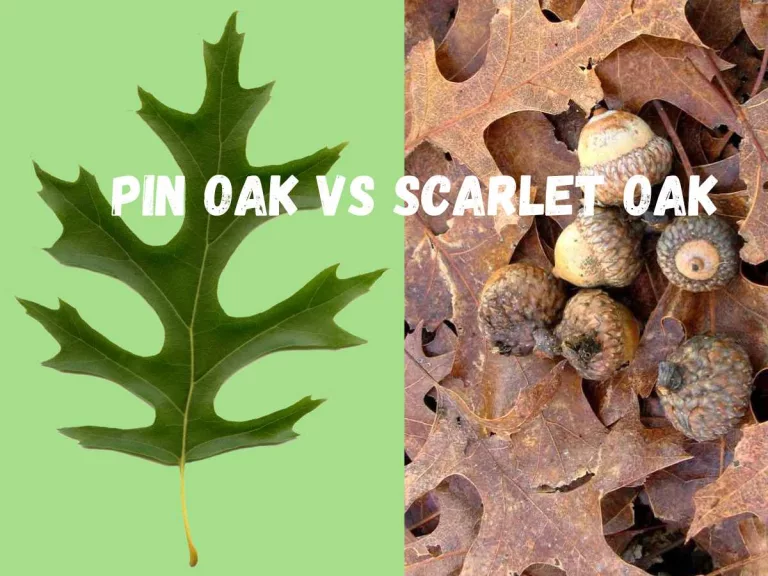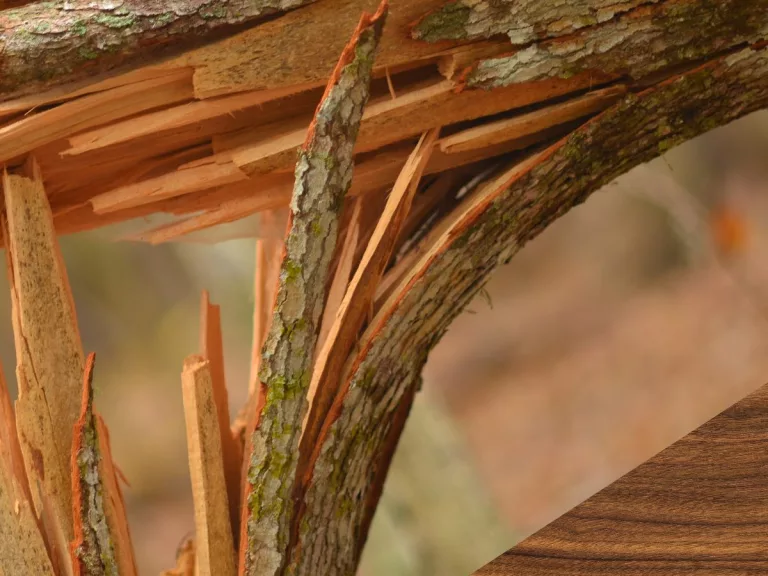Black Oak vs Red Oak: Superb Distinctive Characteristics
In the diverse and expansive world of arboreal species, the oak family stands out for its majestic presence and ecological significance. Understanding Black Oak vs Red Oak not only aids in their identification but also deepens our appreciation of their unique contributions to forest ecosystems and human use.
Among the numerous species within oak family, Black Oak (Quercus velutina) and Red Oak (Quercus rubra) are particularly noteworthy for their distinct characteristics. While they share the common lineage of the Quercus genus, these two species exhibit a range of differences that span from their physical appearance to their ecological roles. Let’s explore a detailed comparison, highlighting the nuances that distinguish these remarkable trees.
Differences
| Feature | Black Oak (Quercus velutina) | Red Oak (Quercus rubra) |
|---|---|---|
| Leaf Shape and Texture | Deeply lobed with bristles at the tips, dull green upper surface, yellowish-brown and fuzzy underside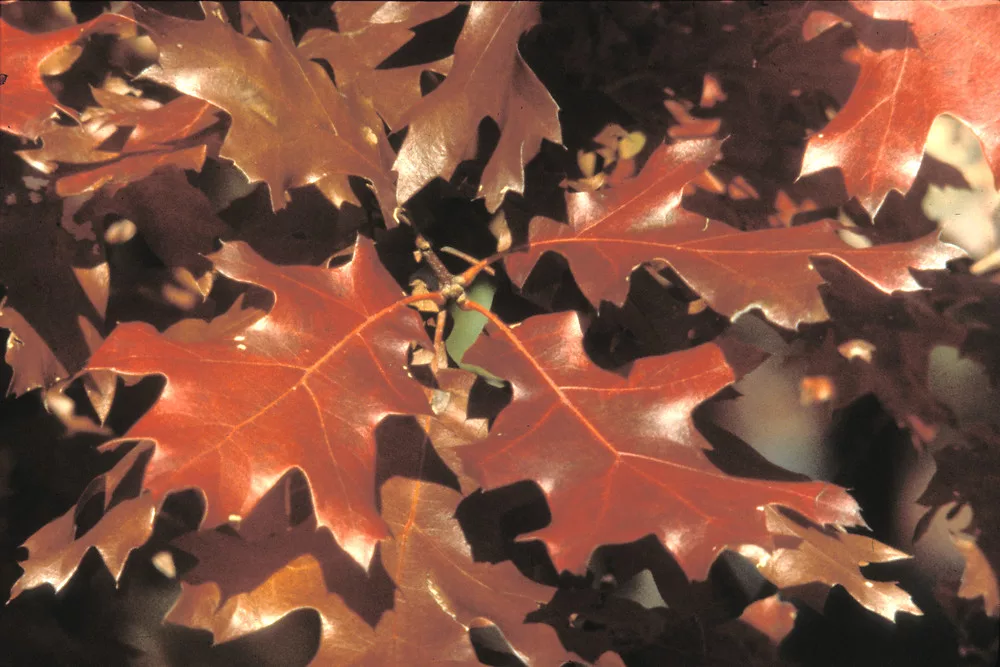 (image by Catherine Heffron) | Less deeply lobed, smooth edges without bristles, bright green on both sides (image by Donald Cameron) |
| Bark | Dark, nearly black, deeply furrowed with horizontally broken ridges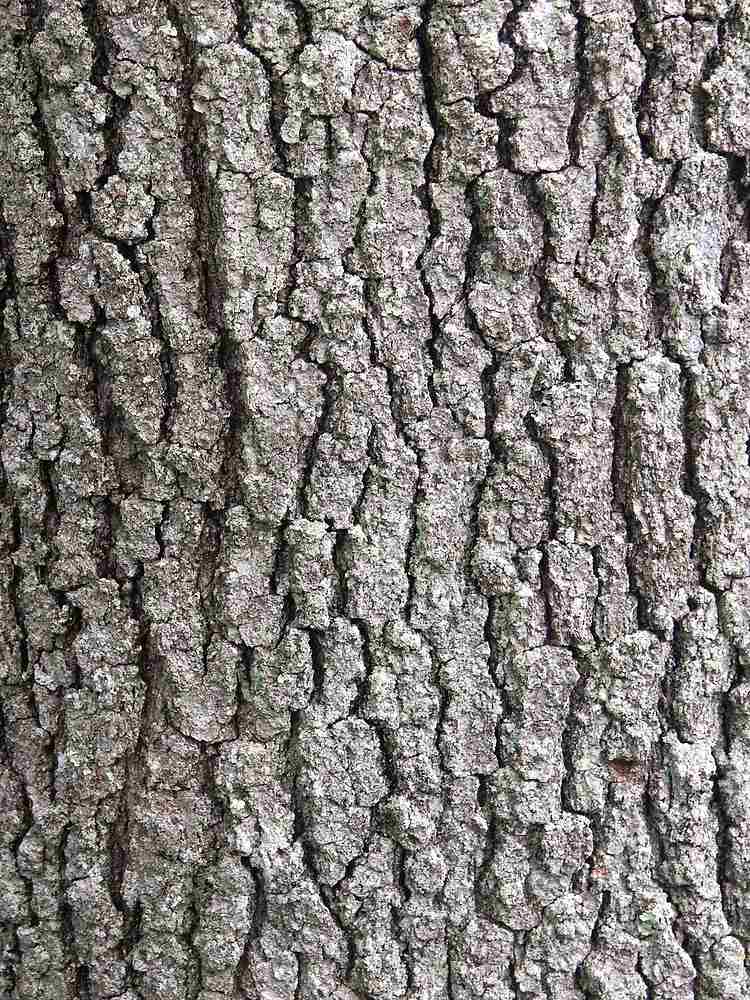 (image by Glenn Dreyer) | Lighter gray-brown, smoother and less deeply furrowed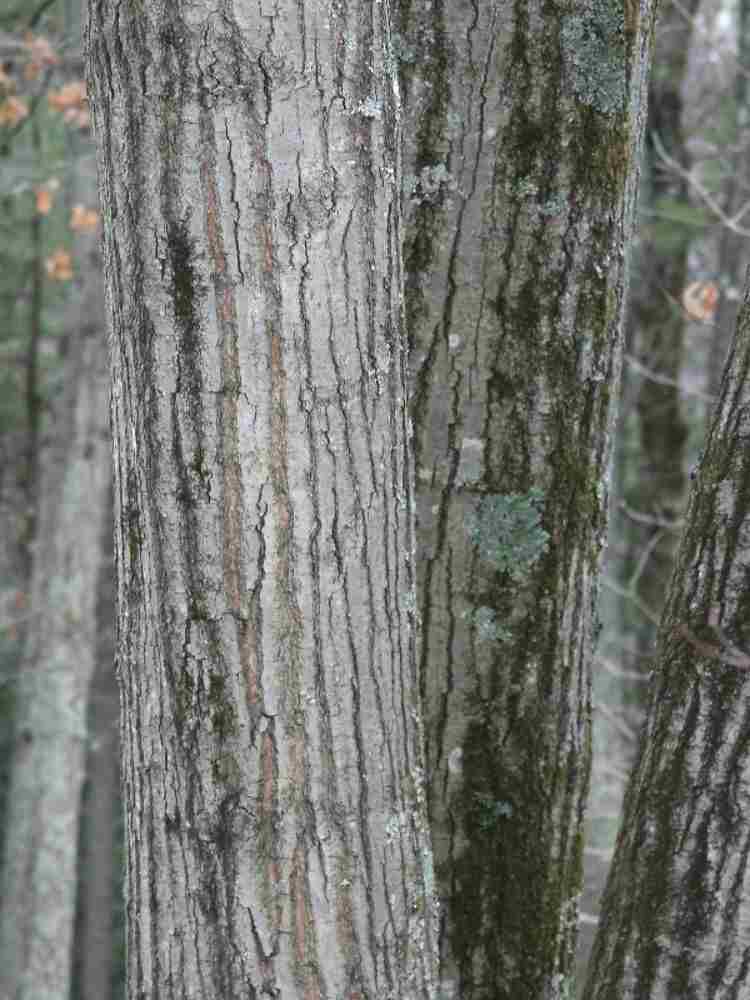 (image by Arieh Tal) |
| Acorns | Large with a fringed cap covering half of the nut, very bitter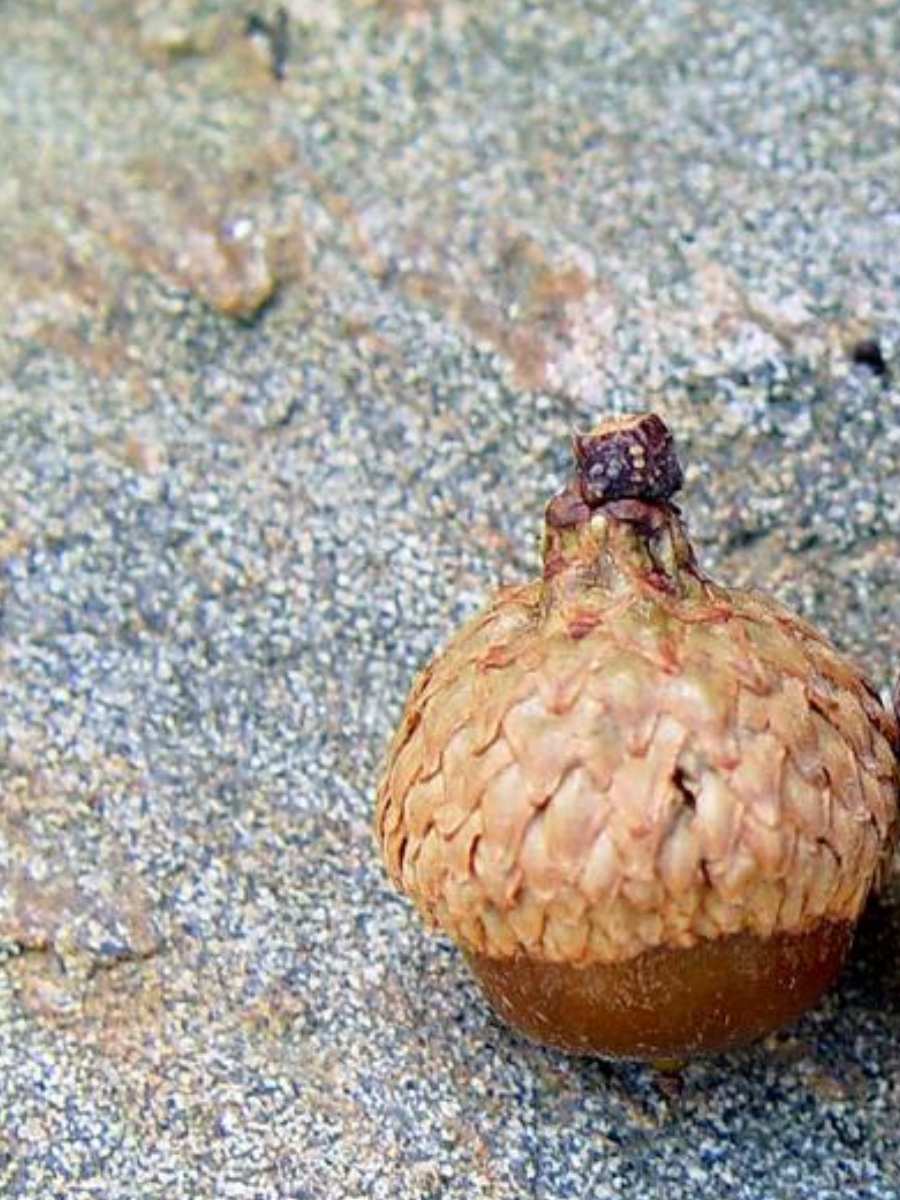 (image by Arthur Haines) | Smaller with a smoother cap covering a quarter of the nut, less bitter (image by Donald Cameron) |
| Flowers | Flowers are yellow-green catkins that appear in early spring. They are less conspicuous and typically shorter.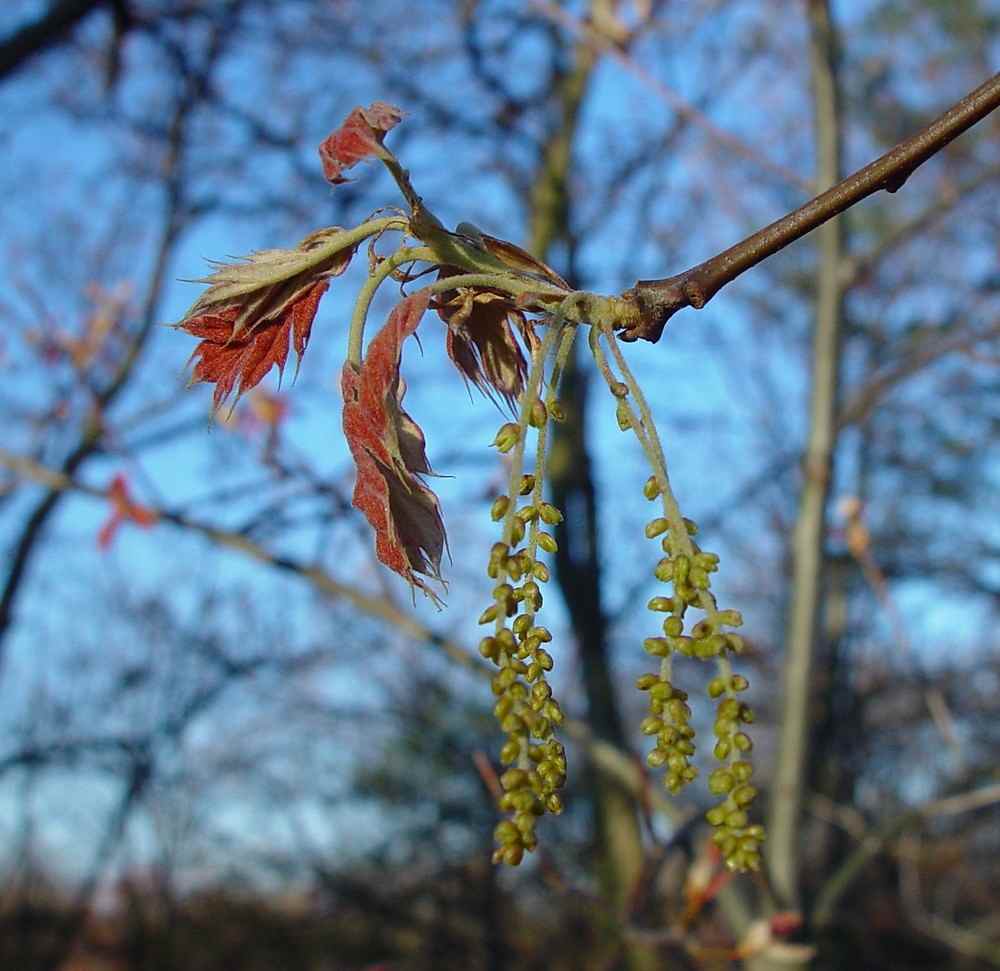 (Image by Arthur Haines) | It also produces catkins, but they are generally longer and more prominent, with a brighter green color, appearing in mid-spring. (image by Arieh Tal) |
| Buds | The buds are generally smaller and more rounded. They are often covered in a fine fuzz and have a slightly angled appearance.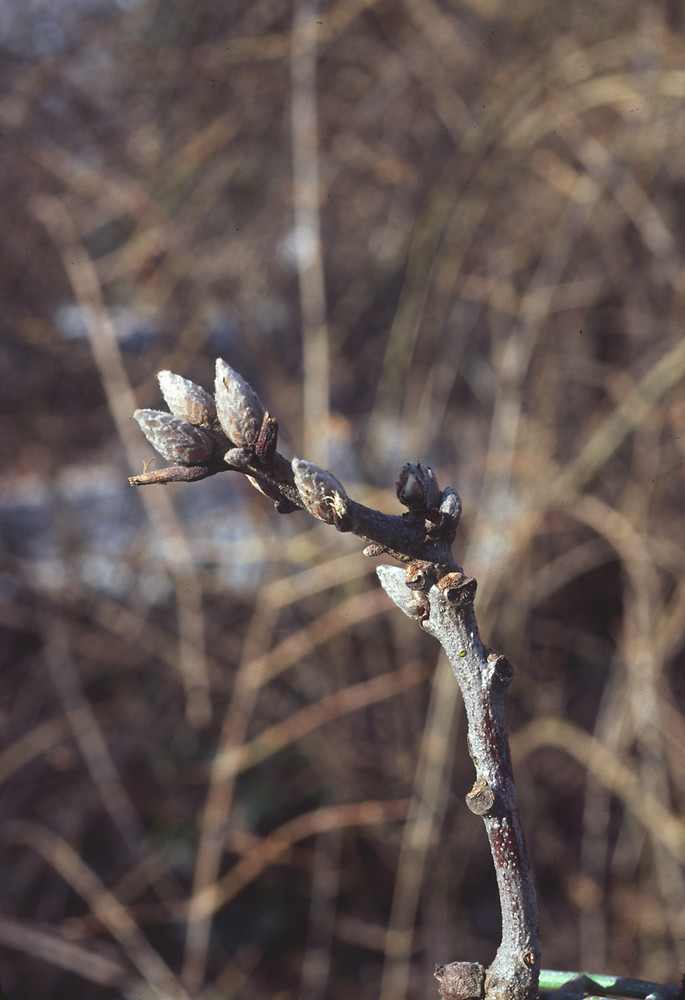 (image by Carol Levine) | Buds are larger and more elongated. They tend to be smooth and have a more distinct, pointed shape.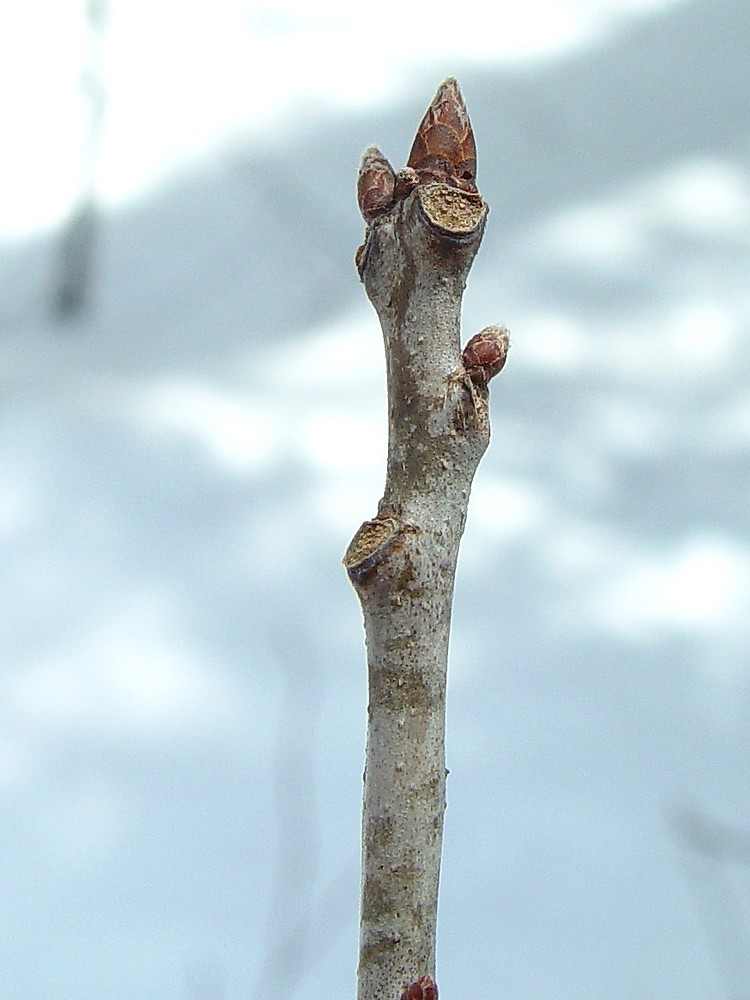 (image by Arthur Haines) |
| Wood Characteristics | Hard and heavy, coarse texture, less commercially valuable | Hard and heavy, uniform texture, highly valued for furniture and flooring |
| Habitat | Found in dry, sandy soils, more drought-tolerant | Prefers moist, well-drained soils, common in mixed hardwood forests |
| Growth and Size | Smaller and slower growth | Fast growth, can become quite large |
| Color of the Wood | Darker yellow-brown heartwood, sometimes with a pinkish/reddish hue, paler sapwood | Pronounced reddish-brown heartwood, lighter white or cream sapwood |
| Grain Pattern | Usually straight but can be irregular or wavy | Typically straight with distinctive, prominent, wider growth rings |
| Porosity | Ring-porous with smaller, less pronounced pores | Ring-porous with larger, more noticeable pores |
| Uses | Utility purposes, cabinetry, interior trim, veneer | High-end furniture, flooring, architectural millwork, cabinetry |
| Fall Foliage | Leaves turn to shades of yellow and brown | Leaves turn to bright red or russet colors |
| Lifespan and Maturity | Shorter lifespan, reaches maturity quickly | Lives for several hundred years, takes longer to reach full maturity |
Here’s a fantastic video on red oak vs black oak.
I once had a rather amusing experience while on a walk in the forest. Intent on identifying Black and Red Oaks for my next project, I strolled among the towering trees, scrutinizing bark and leaves. Armed with my knowledge, I was confident I could spot the differences with ease.
However, nature had a different lesson in store. Every tree I confidently identified as a Black Oak turned out to be a Red Oak upon closer inspection, and vice versa. It was as if the trees had conspired to play a game of botanical hide-and-seek with me.
Related Sources
- Native Plant Trust, Go Botany
- Practical Plants of New England
- Virginia Tech Dendrology
- Red oak vs white oak
- Oak’s credibility as hardwood
- How live oak is different from water oak?
- Scarlet vs pin oak
- Pin oak versus water oak
- Willow oak versus pin oak
- European versus white oak
FAQs
Is a black oak a red oak?
No, they are different species within the oak family.
Is black oak wood valuable?
This wood is valuable, but generally less so than red oak, especially in fine woodworking and furniture making.
How can you tell black oak from northern red oak?
You can differentiate them by their leaves (black oak leaves have bristles and are fuzzier underneath), bark (black oak has darker, more deeply furrowed bark), and acorns (black oak acorns are larger with a fringed cap).



